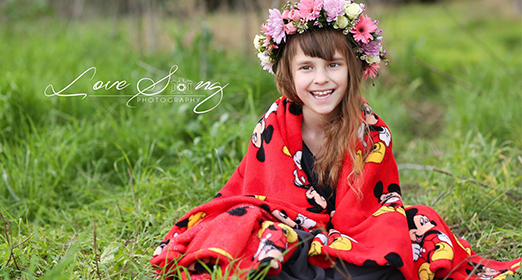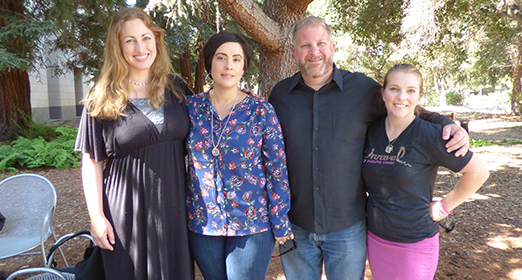Katherine King, known to her more than 30,000 Facebook followers as Katherine the Brave, was diagnosed with Diffuse Intrinsic Pontine Glioma (DIPG) on June 2, 2015. DIPG is a tumor of the brain stem that grows along the brain’s nerve cells, making the tumor inoperable. DIPG has a 0% survival rate; the median survival rate for children diagnosed with DIPG is nine months. Fighting valiantly for 12 months, Katherine passed away on June 6, 2016. Her parents, Jaime and David, chose to donate her brain and brain tumor to Michelle Monje-Deisseroth, MD, PhD, Assistant Professor of Neurology at Stanford University School of Medicine. Dr. Monje-Deisseroth is a world-renowned DIPG researcher seeking to find better treatments for kids diagnosed with DIPG while also searching for a cure for the devastating disease.
Jaime and David recently visited Dr. Monje-Deisseroth to learn more about DIPG research and tumor tissue donation and to see Katherine’s tumor cells as they grow in specialized flasks in Dr. Monje-Deisseroth’s lab. Jaime and David were joined by Libby Kranz, co-founder of Unravel Pediatric Cancer, a nonprofit organization working to spread knowledge about the grim realities of pediatric cancer and the devastating impact of the lack of research funding. Libby is a tireless advocate who raises funds for DIPG research and awareness of the disease.
After learning about several of the research projects that Dr. Monje-Deisseroth is leading, the Kings asked about tumor tissue donation. Dr. Monje-Deisseroth shared with them that tissue from tumors donated for scientific research can be studied in many ways and is not just used to develop tumor cell lines. In fact, a very low percentage of donated DIPG tumor tissue actually grows and becomes a cell line. Dr. Monje-Deisseroth emphasized that there are many other uses for donated tumor tissue. Researchers can look at the cells under a microscope to learn more about the structure of the DIPG cells. DNA and RNA from the whole tumor and individual cells can be sequenced to provide genetic information. Tumor tissue can also be deposited in a tissue bank for further study in the future in ways that may not have even been thought of today. All of these ways to study tumor tissue help researchers learn more about DIPG and can help improve treatment for DIPG.
Finally, it was time for Jaime and David to see the cells that are now growing in Dr. Monje-Deisseroth’s lab from Katherine’s DIPG tumor. It was an emotional time, but the Kings were encouraged by the fact that Katherine will continue to have an impact on the world through DIPG research. Their hope is that Katherine’s legacy contributes to better treatment for other kids diagnosed with DIPG and, ultimately, a cure.
To support Dr. Monje-Deisseroth’s important DIPG research and to honor Katherine, please visit my.supportlpch.org/fundraise?fcid=747343.

